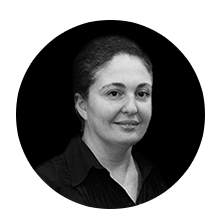Many skin conditions are unsightly, uncomfortable, or painful. However, none are as serious as skin cancer, which can pose a threat to your life. At Khrom Dermatology in Brooklyn, NY we understand the fear, the stress, and vital need for quality care.
You can feel confident knowing that you are in kind and competent hands with Dr. Tatiana Khrom, and Physician Assistant Nana Kanzaveli. They are a talented dermatologist and dermatologic surgeon, and they are trained in the Mohs surgery technique. They are also loved by our patients for her compassionate and understanding style of care. When a skin cancer screening turns into a diagnosis, they can provide the care patients need. This includes biopsies, treatment, and prevention education. The entire team at Khrom Dermatology is pleased to provide skin cancer treatments, including Dr. Tatiana Khrom, and Physician Assistant Nana Kanzaveli.
Understanding skin cancer
Skin cancer begins with damaged DNA in skin cells, usually as a result of UV exposure via sunlight or tanning beds. This damage triggers mutations, leading to uncontrolled rapid formation of abnormal cells in the skin – a condition known as a malignant tumor. There are various types of cancer that can develop on the skin, and some, such as melanoma, are more serious than others. As with any cancer, patients need to take their diagnosis seriously and choose the type of skin cancer removal treatment that is best for their specific needs. Not every type of skin cancer is managed in the same way, and removal will often depend on specifics involved in the patient’s unique case.The effectiveness of skin cancer removal surgery depends on several factors.
- Type – Some forms of skin cancer are more aggressive, and more likely to spread beyond the initial tumor (metastasize). The most serious form of cancer is melanoma, which is known for spreading rapidly and causing more concerning complications.
- Stage– Most cancers can be treated successfully in the very early stages. The more time a tumor has to grow and spread, the more challenging treatment becomes. Early diagnosis is one of the most crucial factors in a successful surgical outcome, which is why Dr. Tatiana Khrom, and Physician Assistant Nana Kanzaveli encourage patients to visit their dermatologist each year for an annual screening. The success of treatment is often related to how early the cancer is detected by a dermatologist and action is taken.
- Surgical technique – There are several methods of removing skin cancers, with varying success rates. Mohs micrographic surgery is considered the most effective, with the highest cure rate. Choosing a surgical technique for the removal of your skin cancer will be based on the type of cancer and the location. Mohs micrographic surgery is extremely popular because it reduces the likelihood of recurrence and can leave less scarring than the alternatives.




